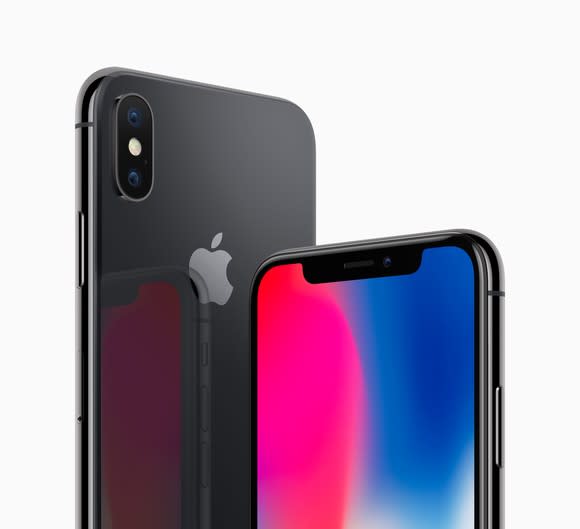An Apple Supplier Reportedly Cuts Component Production
Ahead of the launch of Apple's (NASDAQ: AAPL) hotly anticipated iPhone X, many believed that the smartphone, which was set to represent the biggest step forward in iPhone design in many years, would enjoy off-the-charts demand.
Indeed, many thought ahead of the launch that demand for the iPhone X would be so great that Apple wouldn't be able to reach supply-demand balance for the devices until sometime in the first half of 2018.

Image source: Apple.
The reality was that supply and demand reached equilibrium in late 2017 -- well ahead of investor expectations. Whether that was because of better-than-expected production levels or weaker-than-expected demand isn't entirely clear (though there has been an increasing number of reports pointing to the latter as a significant factor).
Yet another data point has emerged, this time from ET News (via The Investor) that points to the latter.
Major supplier cuts component production
The organic light-emitting diode (OLED) displays used on the iPhone X are believed to be manufactured exclusively by Samsung (NASDAQOTH: SSNLF) Display, as other display makers simply can't produce quality OLED displays in the quantities that Apple needs.
According to ET News, Samsung "seems to be slowing OLED production largely due to lackluster sales of the iPhone X."

Image source: Apple.
Now, to be clear, Samsung Display doesn't just build displays for Apple -- it supplies OLED displays to many other vendors, including its sister company Samsung Mobile as well as other, lesser-known smartphone vendors.
However, the report claims that Samsung's A3 OLED manufacturing plant, which is apparently primarily used to supply OLED panels to Apple, has seen its production come down by 10% compared to where it was in the same period a year ago.
Now, Apple wasn't buying OLED displays from Samsung a year ago (all of Apple's iPhones until the iPhone X used liquid crystal displays supplied by other vendors), so presumably the manufacturing plant had been used to satisfy demand from other customers -- possibly even including Samsung Mobile -- but became dedicated to Apple orders sometime in 2017.
Take this one with a grain of salt
Ultimately, it's not clear to me that Samsung's bringing down production of OLED displays at its A3 plant by 10% compared to where it was in the year-ago quarter can be a reliable sign of iPhone X demand.
Indeed, if the A3 plant was dedicated to churning out OLED displays for Apple in the year-ago quarter and production is down this year, then that would be a sign that Apple's latest iPhone isn't doing as well as the prior-generation model.
Since the plant was apparently previously used to serve an entirely different set of customers -- possibly many different customers -- with entirely different display requirements (for example, the sizes of the displays being churned out could impact factory utilization) and product launch and sales schedules, reading too much into the year-over-year change in production levels may lead investors to entirely incorrect conclusions.
More From The Motley Fool
Ashraf Eassa has no position in any of the stocks mentioned. The Motley Fool owns shares of and recommends Apple. The Motley Fool has the following options: long January 2020 $150 calls on Apple and short January 2020 $155 calls on Apple. The Motley Fool has a disclosure policy.
